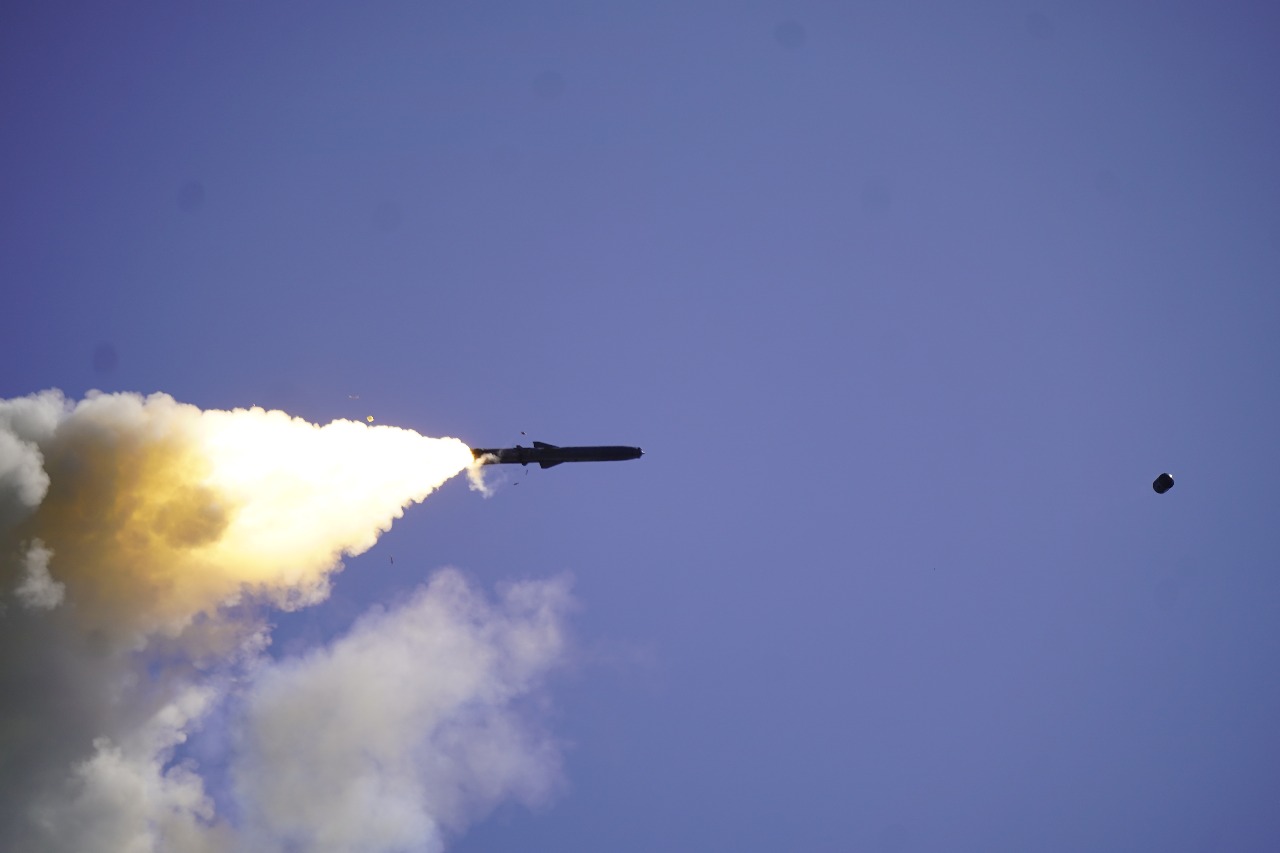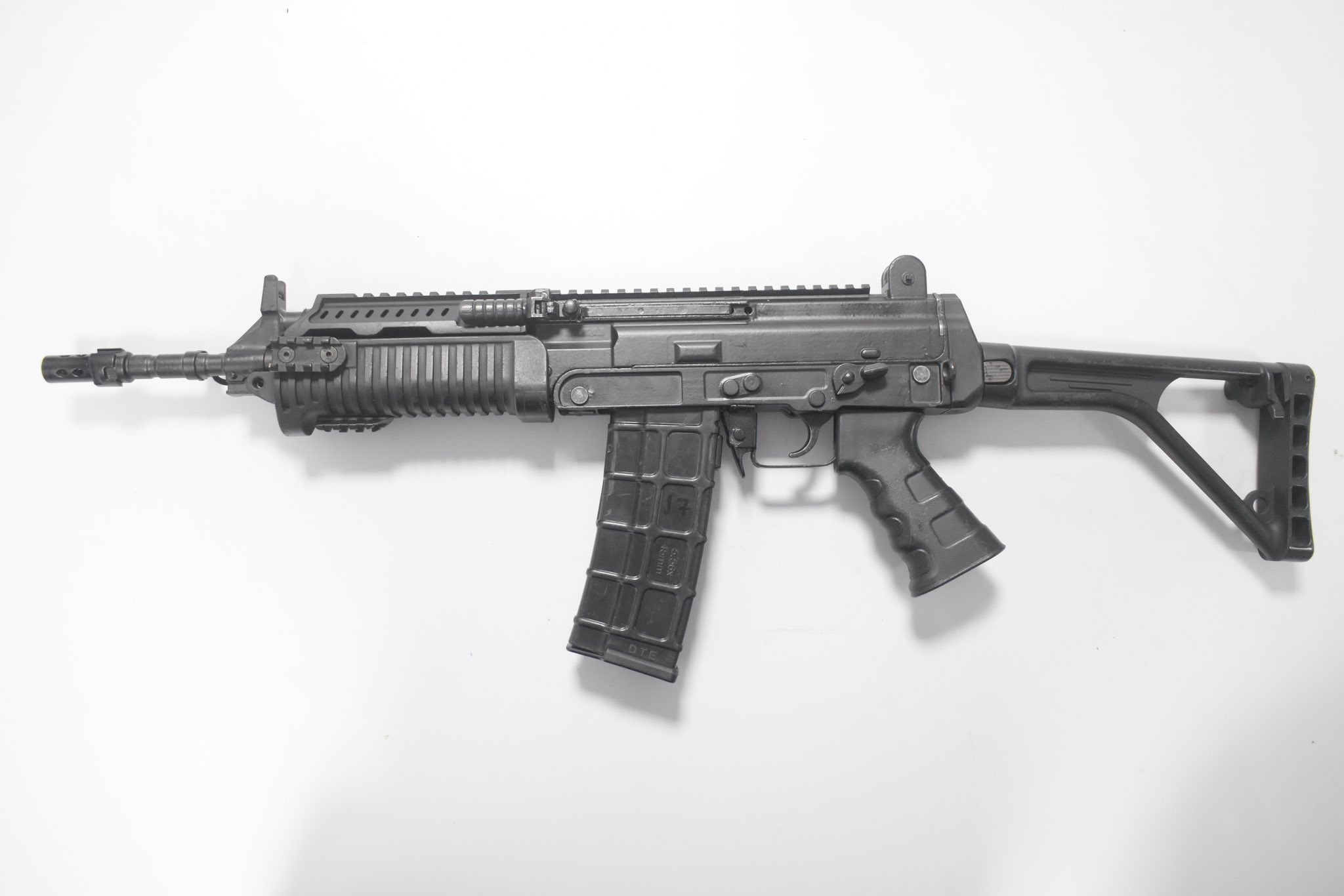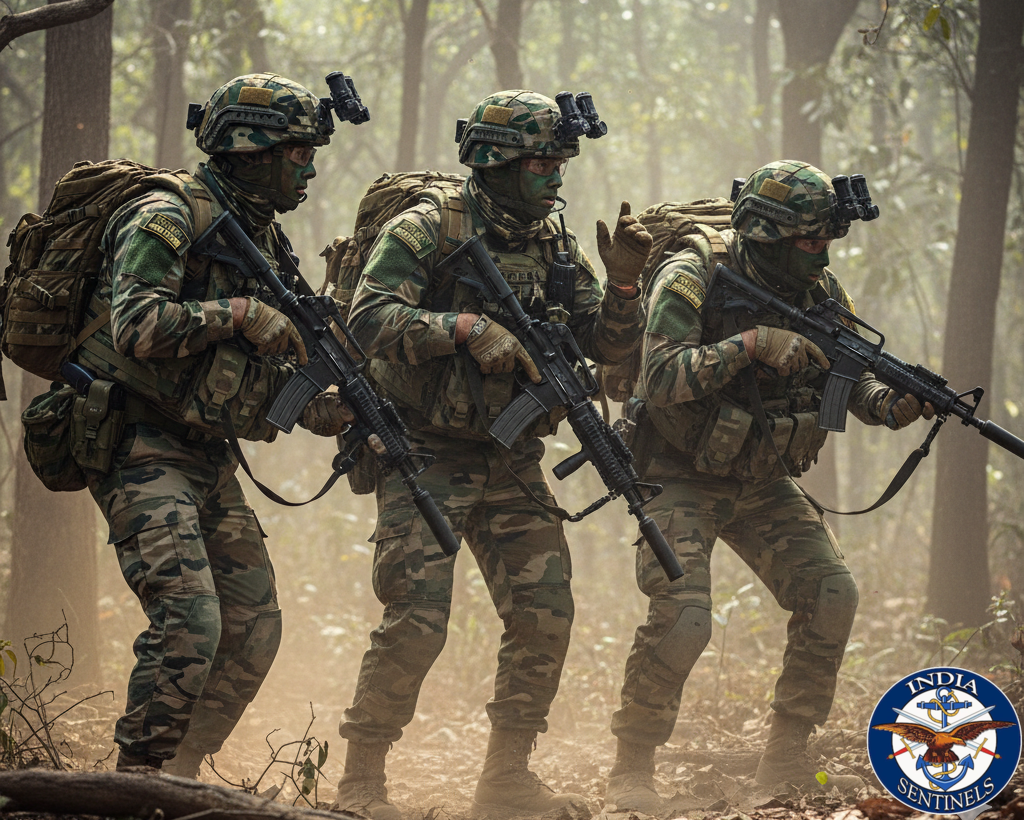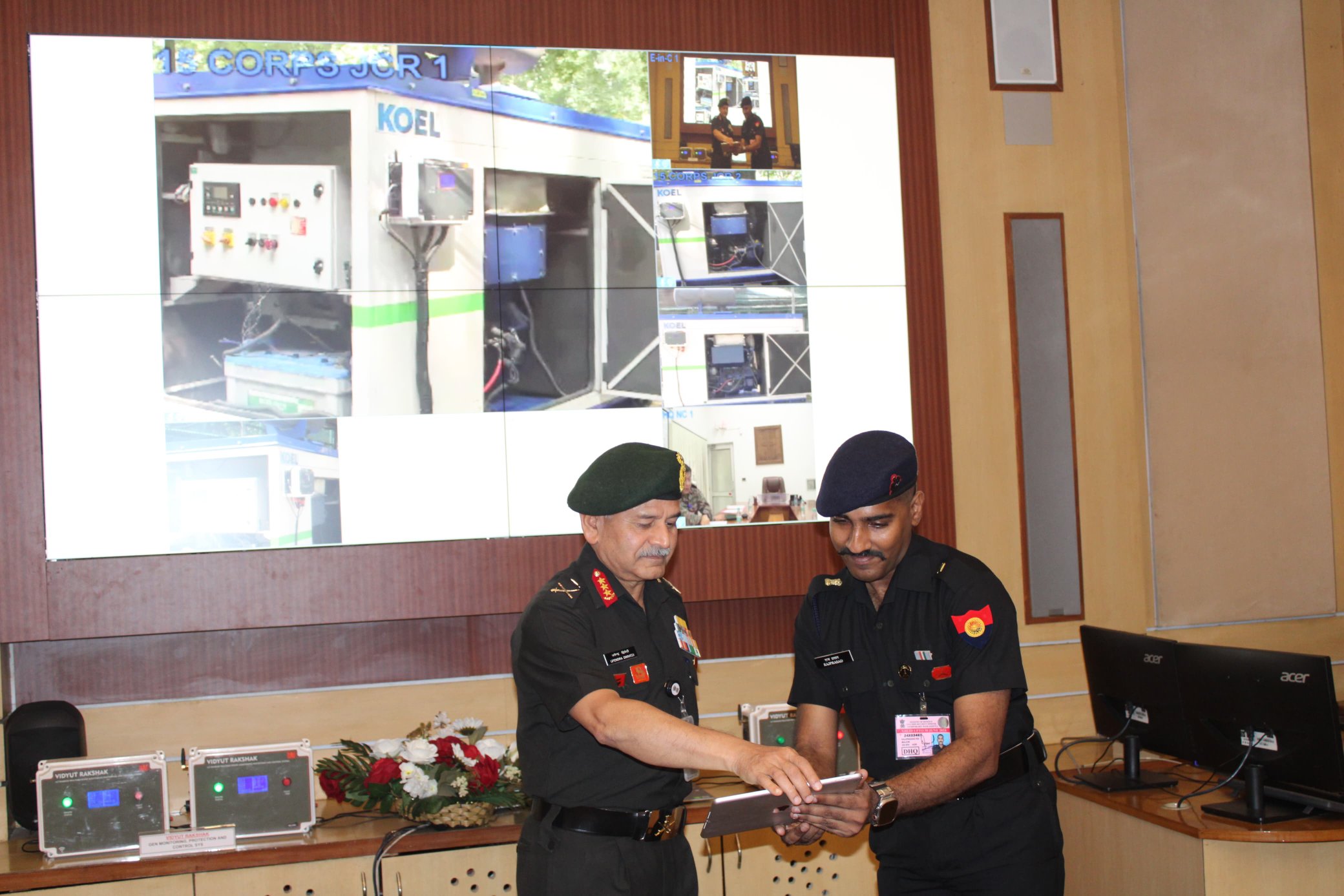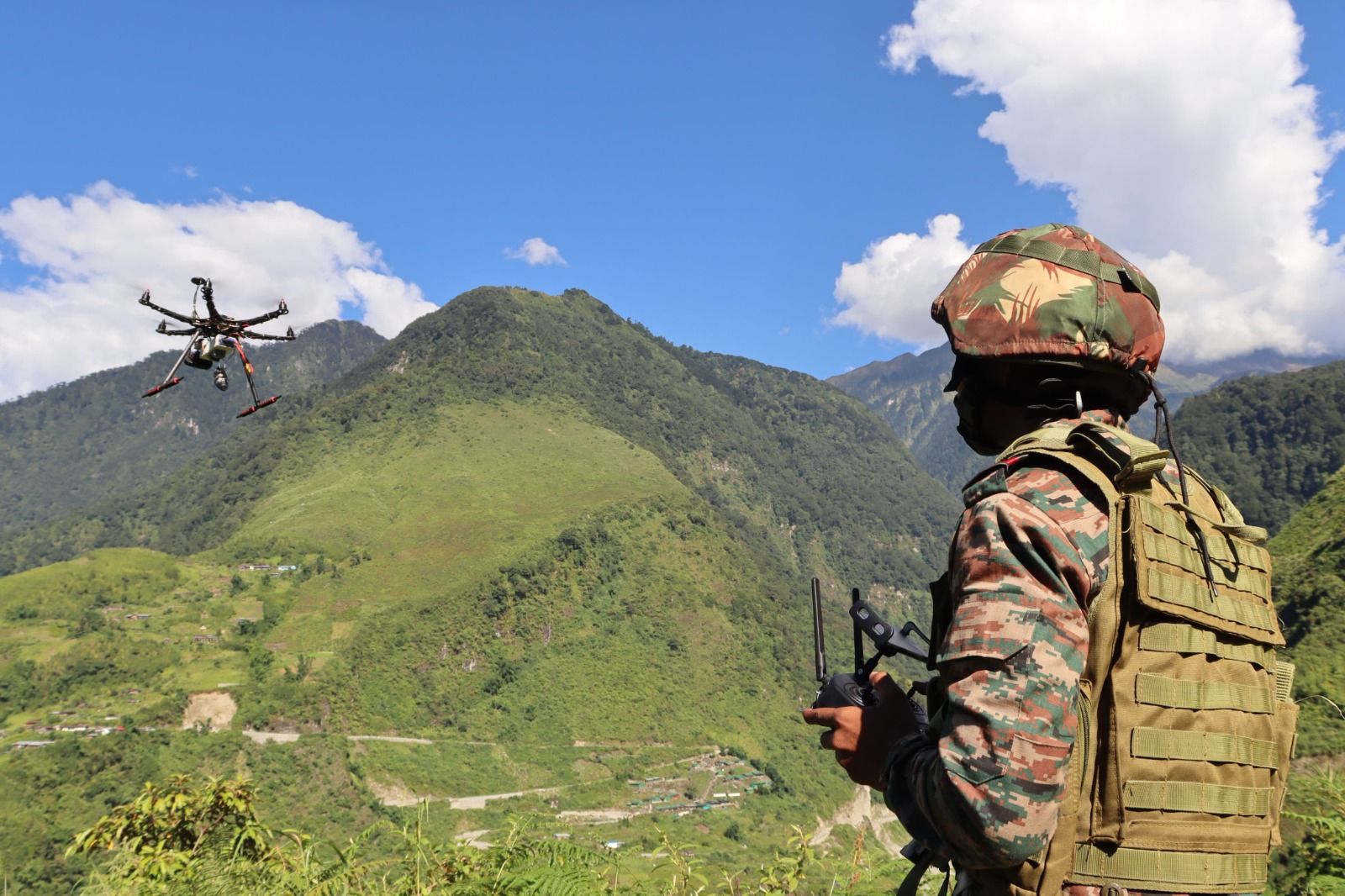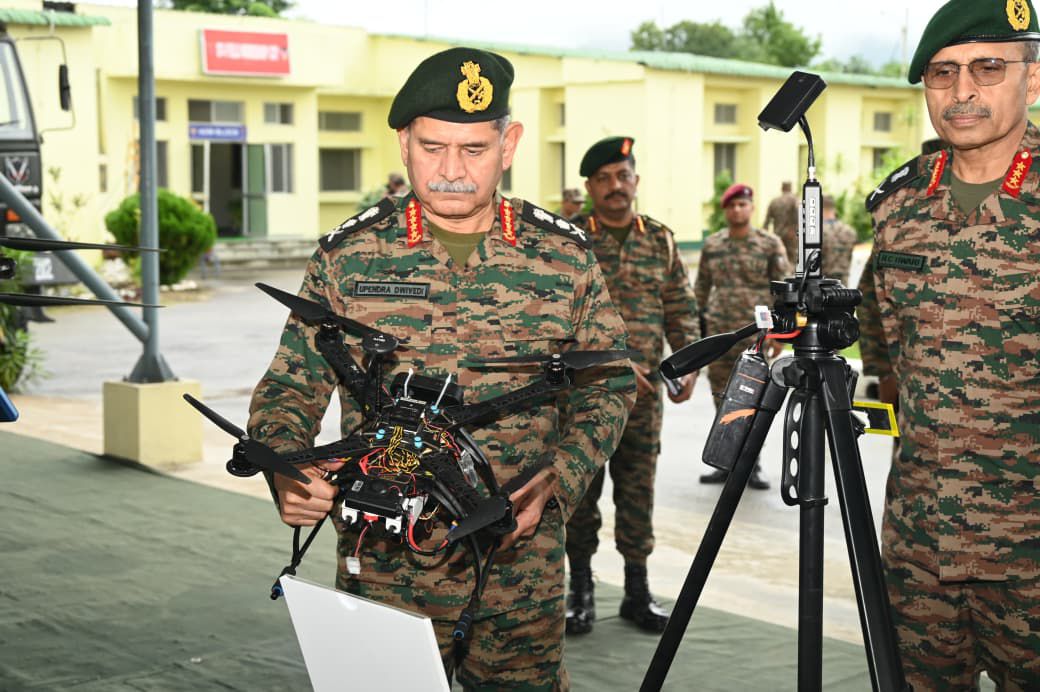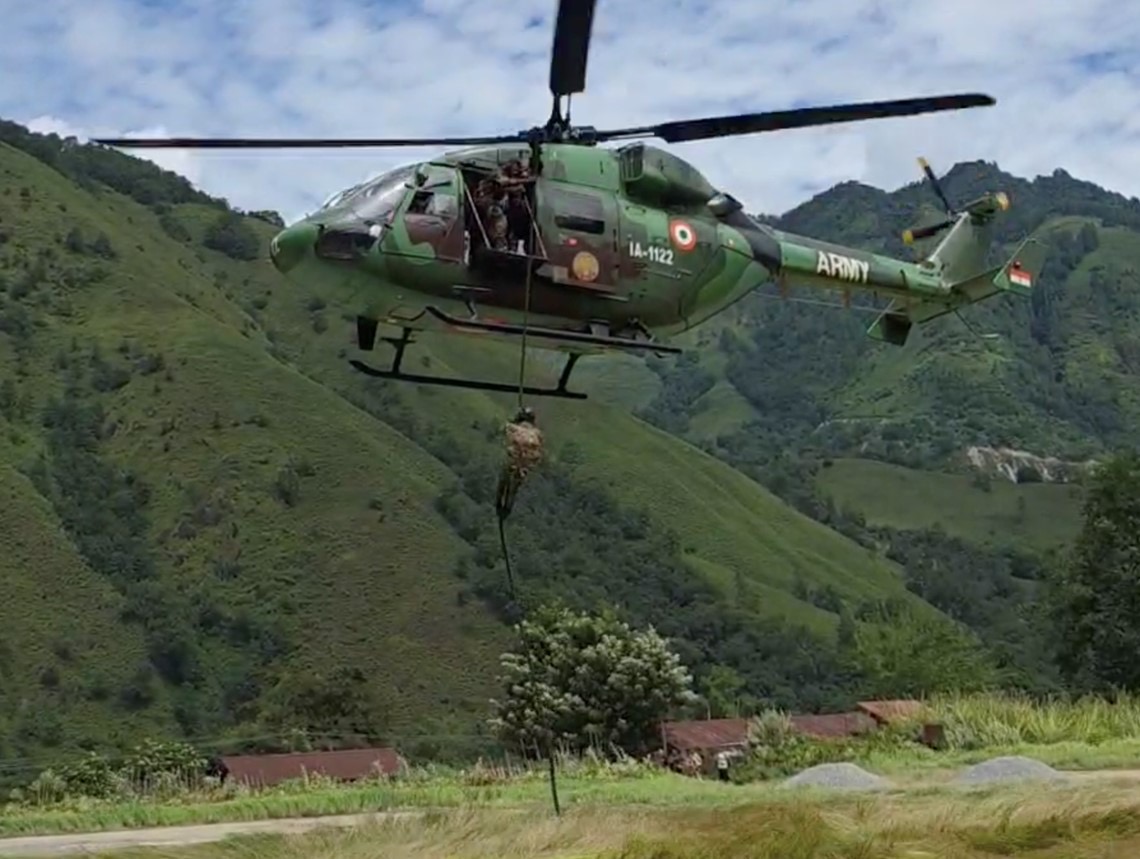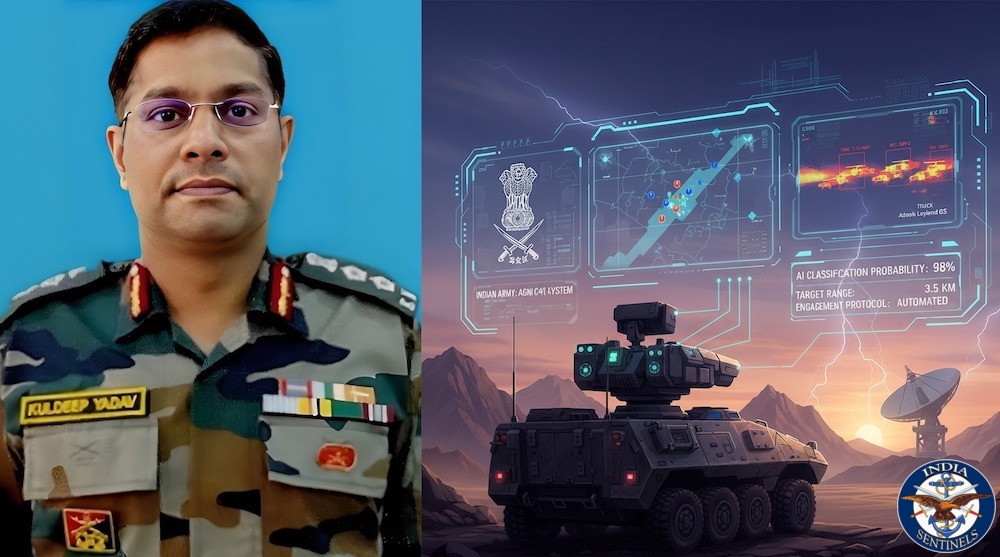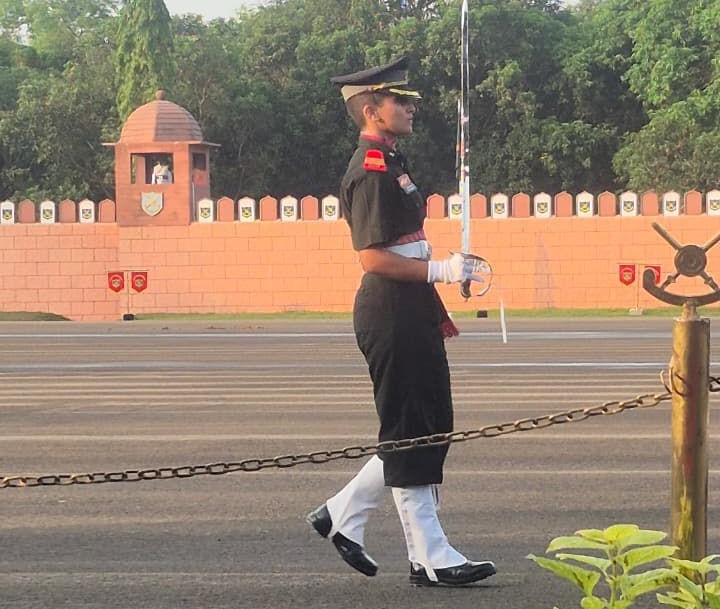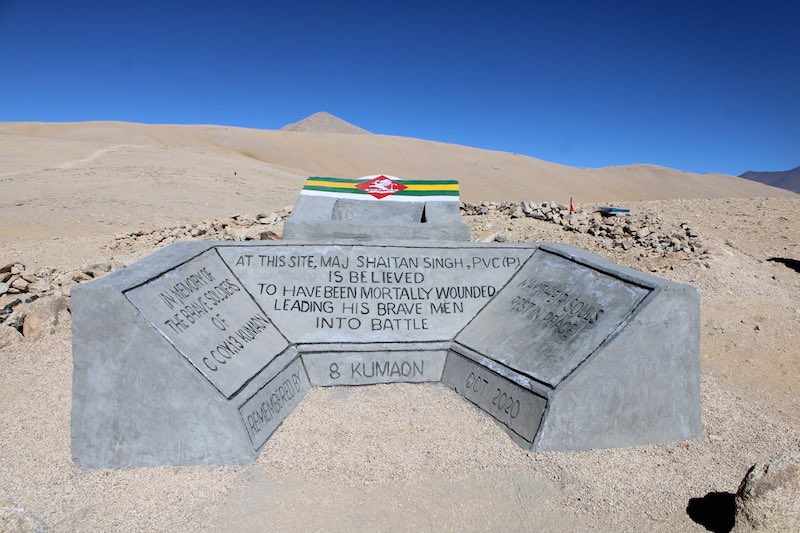 The “memorial” erected by 8 Kumaon troops at the spot, in October 2020, where Maj Shaitan Singh’s body was found, in February 1963. (Photo: X/@kstanzinladakh)
The “memorial” erected by 8 Kumaon troops at the spot, in October 2020, where Maj Shaitan Singh’s body was found, in February 1963. (Photo: X/@kstanzinladakh)New Delhi: A memorial erected by Indian soldiers a few years ago on the spot where Major Shaitan Singh, one of the nation’s most celebrated war heroes, fell fighting the Chinese in the 1962 war’s Battle of Rezang-la, has been razed to create a buffer zone between India and China as part of the deal to de-escalate tensions along the line of actual control (LAC) after the 2020 People’s Liberation Army incursion in eastern Ladakh. This was revealed by Konchok Stanzin, councillor of Chushul in Ladakh Autonomous Hill Development Council, in a post on X, on Monday.
This landmark at Rezang-La held immense significance, honoring the courageous soldiers of "C" Coy 13 Kumaon. Sadly, it had to be dismantled during the disengagement process as it falls in the buffer zone. Let's remember and honor their bravery! 🙏 #RezangLa #Kumaon #BraveSoldiers pic.twitter.com/UILzTeNYsi
— Konchok Stanzin (@kstanzinladakh) December 25, 2023
The Battle of Rezang-la (a pass in the Kailash ranges in eastern Ladakh) is one of the very few battles in the 1962 war that India can be proud of.
Amid the outcry that Maj Shaitan Singh’s memorial was “dismantled”, India Sentinels reached out to Brigadier RV “Raghunath” Jatar (retired), who was in 13 Kumaon and fought alongside Maj Singh in the 1962 war in that sector. While Singh was in Rezang-la with the “C” company, Jatar (who was a major then) was fighting the Chinese with the “D” company at Magar Hill.
Brig Jatar said there was no such memorial in place to begin with. (He was of course referring to an official memorial.) The spot falls under no-man’s land between India and China on the LAC. There was a boulder that was marked where Maj Singh’s body was found. Indian troops retrieved the bodies of the fallen soldiers when they could visit the place along with an International Red Cross team in February 1963.
He added that the area has “always been out of bounds” for troops and civilians alike.
The main memorial built for the fallen heroes of Rezang-la is at Chushul, which is at an altitude of around 14,000 feet above sea level. It is well within Indian territory and is firmly under India’s control.
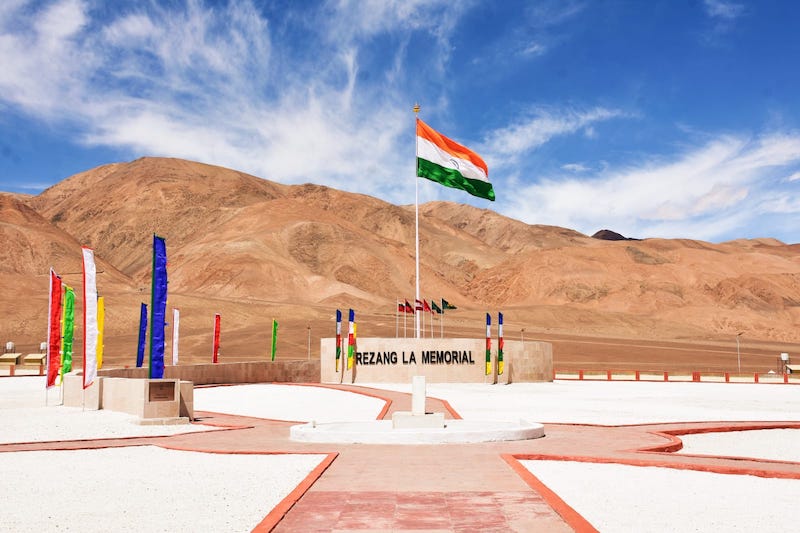 The official Rezang-la War Memorial. (Photo collected by Jai Samota through special arrangement.)
The official Rezang-la War Memorial. (Photo collected by Jai Samota through special arrangement.)
The “memorial” at the spot where Maj Singh’s body was found was erected in 2020, after Indian troops, in a stealth operation on the intervening night of August 29 and 30, took positions at the advantageous heights in the Kailash ranges to force Chinese troops to vacate the north bank of the Pangong lake (Pangong-tso), where they squatted after entering the Indian side of the LAC.
The Indian troops who found the spot then erected the memorial, which was dismantled in early 2021 when India and China agreed to disengage and vacate the area, restoring the status quo ante at the Pangong-tso and Kailash ranges.
Brig Jatar said one should not read too much into the “so-called dismantling” of the memorial.
Talking to India Sentinels, veteran Parachute Regiment officer Brigadier RJS Dhillon (retired), who served in the area and commanded troops there, said: “Actually we have no concept of memorial for individual soldiers in the [Indian] Army or the country. Even war memorials are restricted to one per state. Of course, this bar isn’t applicable for individual battles.”
He added: “This is more of an emotional ratcheting-up being done by all types of well-meaning people. The one in question was anyway built in 2020! A case of ‘much ado about nothing’.”
Battle of Rezang-la and discovery of fallen heroes
At the famous battle, Maj Singh of 13 Kumaon and his 126 men fought to “the last bullet, last man” against around 1,300 Chinese troops at a freezing altitude of around 17,000 feet above sea level, on November 18, 1962.
During the battle, Maj Singh continuously moved from one post to another boosting the morale of his men and reorganizing the defences as the situation evolved. Having exposed himself to the enemy perilously in doing so, he was seriously injured in enemy fire and finally fell.
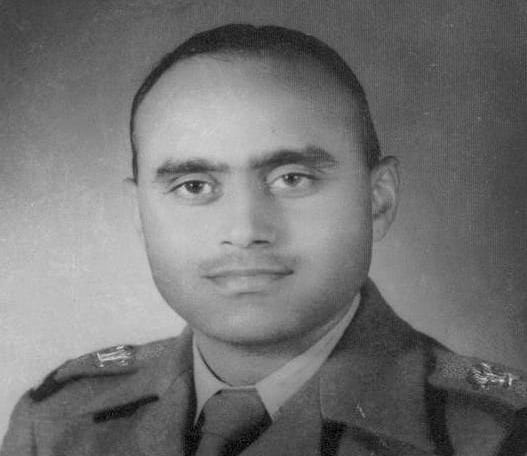 Maj Shaitan Singh.
Maj Shaitan Singh.
Out of a total of 127 men, 110 died in the battle, including Maj Singh. Five were captured by the Chinese, out of which one died in captivity. There were 17 initial survivors, including four POWs, out of which 13 came back alive. In the battle, Jemadar (later Honorary Captain) Ram Chander Yadav, who managed to evade capture returned after Maj Singh ordered him to. He was the last man to see the gallant major alive.
He came back and, along with other survivors, told the story, which was later confirmed by the captured soldiers who managed to escape PLA’s custody and returned.
However, the Army was still sceptical about the story.
In February 1963, after the India-China war was over, a native Ladakhi shepherd wandered across Rezang-la. He was astounded by the incredible battle spectacle of warriors’ frozen bodies but still clutching their wrecked weapons. Their firearms were mostly empty and had bulging barrels from repeated shooting.
A week later, in February 1963, the first Indian party of the International Red Cross and the Indian Army reached Rezang-la and discovered 97 corpses in the shattered trenches with splinter and bullet wounds. The frozen body of Naik Dharampal Dhaiya, a nursing assistant, was holding a morphine syringe and a bandage.
Maj Singh’s body was discovered near where he was last seen by his two men.
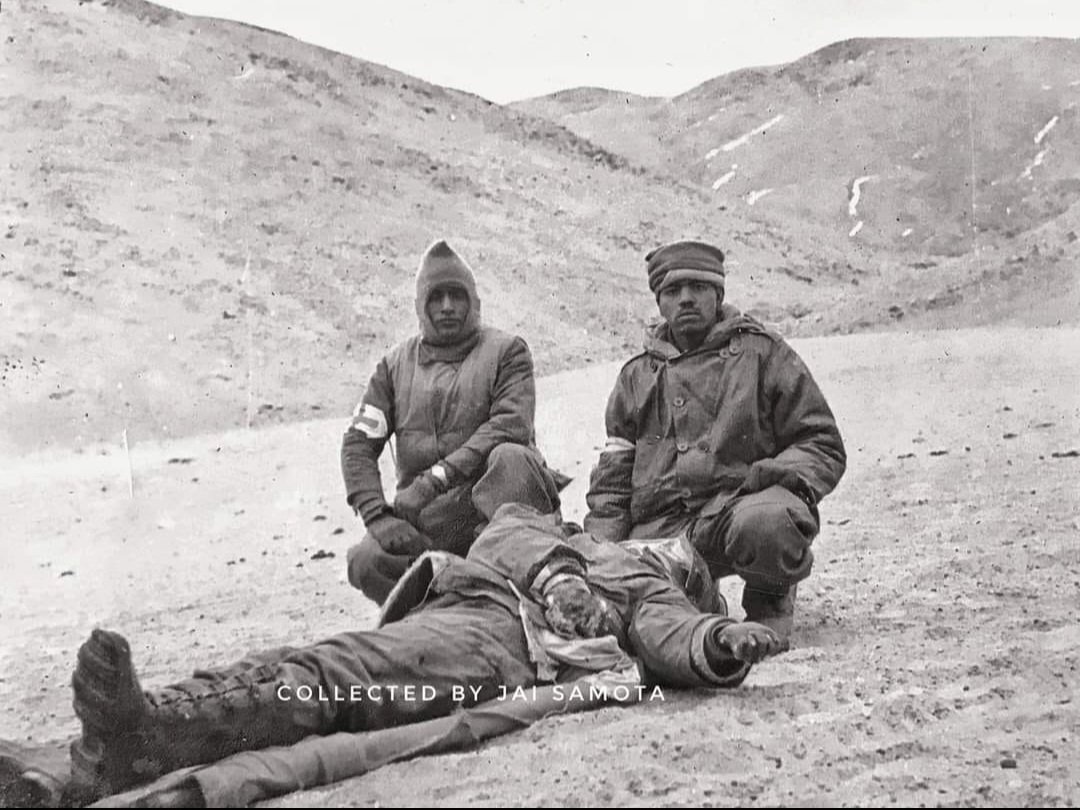 Two soldiers with the mortal remains of Maj Shaitan Singh some distance away from the spot his body was found. (Photo collected by Jai Samota through special arrangement.)
Two soldiers with the mortal remains of Maj Shaitan Singh some distance away from the spot his body was found. (Photo collected by Jai Samota through special arrangement.)
Of the 97 bodies of the fallen soldiers that were discovered in the Rezang-la battlefield, 96 were cremated at the Chushul High Ground where the battalion headquarters used to be. Maj Singh’s mortal remains were sent to Jodhpur, which saw a sea of humanity joining his funeral procession. He was cremated with full military honours. Later, he was awarded the country’s highest wartime gallantry award: Param Vir Chakra.
The 13 Kumaon also received an unprecedented 10 medals for its feats in the battle. Apart from Maj Shaitan Singh’s Param Vir Chakra, the men of this unit earned five Vir Chakras, four Sena Medals (Gallantry) and one Mention in Despatches.
Status quo of LAC in eastern Ladakh
Following China’s 2020 land grab in eastern Ladakh, which triggered a tense military build-up and stand-off between the Indian and Chinese forces, India lost access to vast swathes of its territory in the region.
As India Sentinels had reported, according to a leaked report, the-then senior superintendent of Ladakh Police, PD Nitya, in a research paper submitted at the annual Directors General of Police Conference in New Delhi in January, said India had lost 26 out of 65 patrolling points near the LAC in eastern Ladakh following China’s incursion into and occupation of Indian territory. In the paper, Nitya stated that India’s security forces are no longer able to patrol these 26 patrolling points between the Karakoram pass and the Chumur region in eastern Ladakh.
However, the paper, which was one of the 15 submitted by senior police officers on “Security Issues Pertaining to Unfenced Land Border”, was not discussed during the event, which the prime minister, Narendra Modi, and the Union home minister, Amit Shah, attended.
Note: For a detailed account of the Rezang-la battle, please read Jai Samota’s article here on India Sentinels. Samota is also the author of the book “Major Shaitan Singh: The Man in Half Light”, published by Prabhat Prakashan and released this month.
© India Sentinels 2022-23

